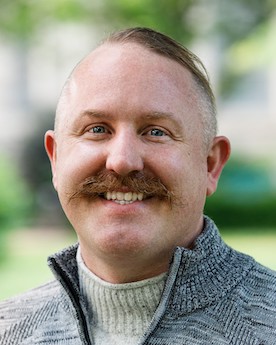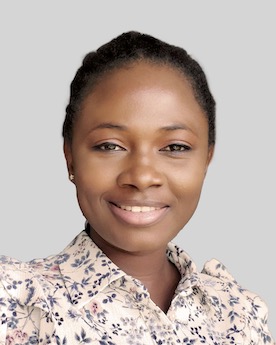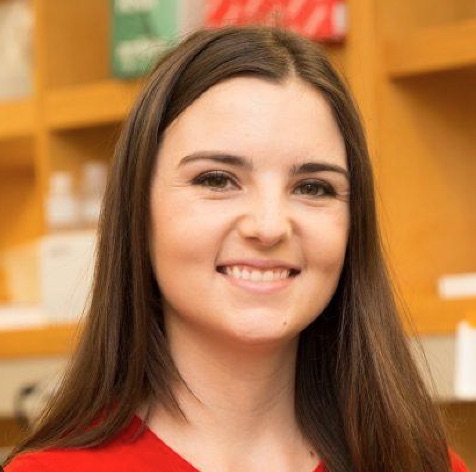
Scripps Research Institute
Appointed in 1978
Read more
Scripps Research Institute
Appointed in 1978

Salk Institute for Biological Studies
Appointed in 1966
Read more
Salk Institute for Biological Studies
Appointed in 1966

St. Jude Children's Research Hospital
Appointed in 2023
Read more
St. Jude Children's Research Hospital
Appointed in 2023
CRISPR-associated transposons (CASTS) enable programmable DNA insertion, yet there is a limited understanding of how they recognize specific DNA sequences and activate DNA insertion. Dr. Jeffery Swan will conduct structural and kinetic studies of CASTs in Dr. Elizabeth Kellogg’s lab at St. Jude Children’s Research Hospital. Dr. Swan will investigate the AAA+ (ATPases Associated with diverse cellular Activities) regulator TnsC which influences both ATP hydrolysis and DNA deformation. He will use cryo-electron microscopy to structurally characterize the fully assembled integration complex, and single-molecule and ensemble kinetic experiments to better understand transpososome assembly and activation. Swan anticipates that these studies will guide future attempts to rationally engineer CASTs for gene-editing and therapeutic applications.
As a Ph.D. student in Dr. Carrie Partch‘s lab at the University of California at Santa Cruz, Swan investigated the role of the KaiC, an AAA+ protein that effectuates circadian timing. Dr. Swan demonstrated that the ATPase activity in KaiC imparts cooperativity to the transition between autophosphorylation and autodephosphorylation, which is an important feature of the circadian clock. With his expertise in AAA+ proteins, Dr. Swan is ready to investigate how TnsC enables the programmable DNA insertion of CASTs.

Massachusetts Institute of Technology
Appointed in 2016
Read more
Massachusetts Institute of Technology
Appointed in 2016
I am passionate about biological processes that occur at cellular membranes. Membranes not only define the borders of cells but also create a fascinating physicochemical environment for a wide diversity of functions. The broad questions that I have been addressing focus on understanding the role of membrane lipids in the function of membrane peptides and membrane protein complexes and developing innovative methods for modulating lipid-peptide or lipid-protein interactions in order to control biological responses._x000D_
_x000D_
During my graduate research in France under the supervision of Prof. Solange Lavielle and Dr. Fabienne Burlina (at the École Normale Supérieure and the Pierre and Marie Curie University), I studied the spontaneous translocation of peptides through cell membranes that can be used as drug delivery agents. I characterized the translocation event at the molecular level, which provided pertinent clues to the design of drug delivery vectors with enhanced translocation abilities._x000D_
_x000D_
As a post-doctoral fellow in the laboratory of Prof. Barbara Imperiali (at Massachusetts Institute of Technology), my overarching goal is to decipher the organization and dynamics of supramolecular membrane protein complexes that are part of the N-linked protein glycosylation pathway of pathogenic bacteria. I propose to complement the current methods with an integrated strategy that will merge cell-free membrane protein expression, bioorthogonal labeling and membrane bilayer Nanodiscs. When combined, these technologies will give access to site-specifically labeled membrane-resident protein samples for detailed single-molecule biophysical analysis.


Duke University
Appointed in 1987

University of California, San Francisco
Appointed in 1994
Read more
University of California, San Francisco
Appointed in 1994

National Institutes of Health
Appointed in 1948
Read more
National Institutes of Health
Appointed in 1948
Supplement to NIH grant


New York University
Appointed in 1963

University of Colorado, Boulder
Appointed in 1994
Read more
University of Colorado, Boulder
Appointed in 1994


Harvard University
Appointed in 1984


Stanford University
Appointed in 2010
Calcium signaling is ubiquitous within cells, with numerous implications for cancer biology. I am developing new molecular tools to study spatiotemporal calcium signaling in neurons and other cell types._x000D_
_x000D_
My interest in biology originally stemmed from a love for math, engineering, and technology. High-school experiences on the computer team, and during a summer internship where I worked with circuits and radar, hooked me on engineering, and led to an undergraduate major in electrical engineering. However, I had a lingering penchant for biology and, during college, when I was exposed to the field of bioengineering, I realized how engineering and biology were truly compatible with one another. Since then, Ive had the privilege of full-immersion into both biology and technology. I received my MD/PhD at Johns Hopkins where my incredible mentor, David Yue, helped me realize how beautiful complexity can arise from simple interactions present within cells, and how calcium, in particular, acts as a universal currency of information transfer within cells. With JCC fellowship support, I plan to develop tools not only to study, but also manipulate calcium signaling in cells tools that will likely be useful in many branches of biological science.

Massachusetts Institute of Technology
Appointed in 2004
Read more
Massachusetts Institute of Technology
Appointed in 2004


National Institutes of Health
Appointed in 1955

University of California, San Francisco
Appointed in 1997
Read more
University of California, San Francisco
Appointed in 1997


University of Oregon
Appointed in 1993

University of Colorado, Boulder
Appointed in 1985
Read more
University of Colorado, Boulder
Appointed in 1985

University of California, Berkeley
Appointed in 2009
Read more
University of California, Berkeley
Appointed in 2009
I am interested in understanding how genome structure affects genome function and evolution.  I am studying how chromosome organization limits homologous recombination between dispersed repetitive DNA elements.
I owe my scientific curiosity to two people: my father, who always took the time to answer my questions when I was young, and my high school biology teacher, Dr. Daniel Walsh, who had an endless supply of knowledge and enthusiasm about science. I’m pursuing an academic research career because I believe that one-on-one mentoring between a principal investigator and a graduate students is an ideal training forum.
Previously, I was a lot more active in sports, mostly cycling and running. ¬†These days, however, when I’m not working, my life centers around my wife and our two dogs. ¬†I am still trying to fit in that occasional run!

Boston Children's Hospital /
Harvard University Medical School
Appointed in 2014
Read more
Boston Children's Hospital / Harvard University Medical School
Appointed in 2014
My first contact with the field of host and pathogen interaction dated back to the time when I was working at Dr. Feng Shao’s Lab at the National Institute of Biological Sciences, Beijing (NIBS), one of the most prestigious research institute in China.¬†¬† My intern project was to clone and characterize the host substrates of an E3 ubiquitin ligase domain containing effector protein from the vacuolar pathogen Legionella pneumophila. From this experience, I was deeply impressed by the broad array of biochemical mechanisms employed by the bacterial effector proteins to manipulate host functions in order to survive and proliferate inside the host.¬† Furthermore, this experience built up my passion and determination to launch my research journey in host and pathogen interaction.
A year later after my internship, I went on to pursuit my graduate study in Dr. Zhao-Qing Luo’s Lab at Purdue University.  My research projects have been focused on the manipulation of host membrane trafficking pathways by Legionella effectors.  Specifically, I have discovered that Legionella effector proteins exploited distinct post-translational modification mechanisms, i.e. reversible AMPylation and Phosphorylcholination, to regulate the activities of the host small GTPase Rab1. In summary, these findings highlight the sophisticated nature of host-pathogen interactions and reveals that bacterium has the ability to rewire host signaling events for its own benefit.
Living in the ocean of microorganisms, the innate immune system is the first line of defense to protect host from invading pathogens and to maintain tissue homeostasis.  Thus, for my postdoctoral training, I would like to branch out my research focus from microbial pathogenesis into studying the cell biological and biochemical regulatory mechanisms of the host innate immune response.  Particularly, I will decipher the spatial-temporal relationships among the earliest cell biological events triggered by endotoxin, such as receptor endocytosis, reactive oxygen production, LC3 associated phagocytosis and SMOC formation.  I believe that my proposed research will provide new insights into the previously unexplored area of TLR signaling.

Dana-Farber Cancer Institute
Appointed in 2002
Read more
Dana-Farber Cancer Institute
Appointed in 2002

California Institute of Technology
Appointed in 2010
Read more
California Institute of Technology
Appointed in 2010
I grew up in Tokyo, Japan, and came to Los Angeles in 2000 to obtain an undergraduate degree in biochemistry. In my junior year at the ¬†University of California, Los Angeles, I joined the protein expression laboratory under Professor Jeanne Perry’s supervision; there, I was fascinated by x-ray crystallography and decided to go to graduate school to learn more about protein structures and functions. During my¬†graduate study at UCLA, I joined Professor Todd Yeates’ laboratory and determined various structures of shell proteins from bacterial¬†microcompartments. I love southern California and am very happy that I get to stay here to do my post-doctoral work at Caltech.


Harvard University
Appointed in 2016
Genetic abnormality is the root cause of many diseases. Canonical therapeutics primarily function by binding to the disease-associated proteins and modulating their activity. The recent advent of programmable sequence-specific endonucleases, however, has raised the possibility of direct manipulation of the corresponding genes and could eventually lead to effective cures of many diseases. The therapeutic potential of genome-editing agents is currently limited due to undesired DNA modifications including activity at off-target DNA sites and activity (on-target or off-target) in cells that are not the target population. My research focuses on developing genome-editing agents responsive to various endogenous and exogenous signals with improved specificity


Stanford University
Appointed in 1991

University of Oxford, England
Appointed in 1956
Read more
University of Oxford, England
Appointed in 1956


University of Washington
Appointed in 2005

McGill-Montreal General Hospital Research Institute
Appointed in 1961
Read more
McGill-Montreal General Hospital Research Institute
Appointed in 1961

University of Cambridge, England
Appointed in 1960
Read more
University of Cambridge, England
Appointed in 1960


Stanford University
Appointed in 1972

MRC Center, University Medical School, England
Appointed in 1976
Read more
MRC Center, University Medical School, England
Appointed in 1976

Whitehead Institute for Biomedical Research
Appointed in 1983
Read more
Whitehead Institute for Biomedical Research
Appointed in 1983

Massachusetts Institute of Technology
Appointed in 1972
Read more
Massachusetts Institute of Technology
Appointed in 1972

National Institute of Allergy and Infectious Diseases
Appointed in 2023
Read more
National Institute of Allergy and Infectious Diseases
Appointed in 2023
In disease-causing organisms, hybridization allows for the transfer of traits such as virulence and drug resistance. Dr. Mabel Tettey will investigate how hybridization impacts African trypanosomiasis outbreaks caused by the parasite Trypanosoma brucei. Dr. Tettey will assess the degree of hybridization occurring in African trypanosome endemic areas, explore the impact of hybridization on virulence, and identify the key molecules involved in this process. She will conduct these experiments in Dr. Michael Grigg’s lab at the National Institute of Allergy and Infectious Diseases. These studies may enable the development of effective disease control strategies against African trypanosomes.
As a graduate student in Dr. Keith Matthews’ lab at the University of Edinburgh, Tettey examined the function of released peptidases in the transmission of African trypanosomes. Specifically, Dr. Tettey identified the genes that dominate quorum sensing signal in African trypanosomes. With her extensive background in trypanosome biology, Dr. Tettey will now examine the role of hybridization in trypanosome virulence.

University of California, Berkeley
Appointed in 2014
Read more
University of California, Berkeley
Appointed in 2014
Cellular memory can be defined as the ability of a cell to transmit all its identifying functions to daughter cells during cell division. This ability to ‘remember’ identity is crucial to the development of multicellular organisms, as evidenced when cells lose their identity and degenerate or become cancerous. Conversely, our ability to alter cell state, such as the generation of induced pluripotent stem (iPS) cells from differentiated cells, has become a promising therapeutic tool. Therefore, understanding how cells establish, maintain, and change identity will further our understanding of processes central to cellular development, disease progression, and therapy production. One mechanism for cellular memory is the ability to re-establish the transcriptional program following mitosis, which may function through bookmarking, the process of DNA-binding factors marking genes on condensed mitotic chromosomes to facilitate gene expression following mitosis. The main objective of this proposal is to analyze the mechanisms of bookmarking. I outline three independent approaches to characterize quantitatively the mechanisms of bookmarking. Using these approaches, I will test the hypothesis that histone variants and pluripotency factors function as bookmarkers to maintain the stem cell state. Lastly, I will perform an unbiased screen to identify putative bookmarking factors specific to embryonic stem cells.

Whitehead Institute for Biomedical Research
Appointed in 2021
Read more
Whitehead Institute for Biomedical Research
Appointed in 2021
Cancer affects men and women differently. For example, glioblastoma, the most aggressive form of brain cancer, has a male-biased incidence rate and poorer response to standard treatments in men versus women. My research investigates the genetic and molecular basis of sex differences in glioblastoma from the perspective of microglia, the resident immune cells of the brain. Microglia are a major player in the brain tumor microenvironment and promote tumor growth and metastasis. Using XX and XY human microglia isolated from healthy brain regions and brain tumors, I am identifying sex-biased genes and biological pathways that are responsible for establishing sexually dimorphic brain tumor microenvironments. Further, I am testing how possessing an XX or XY sex chromosome complement drives the observed genome-wide sex-biased gene expression patterns in microglia, in particular, through X-linked genes that aberrantly escape X chromosome inactivation or homologous X-Y gene pairs with imbalanced expression or function. I anticipate that my research will lay the groundwork for more effective and sex-specific treatments for glioblastoma.


Rockefeller University
Appointed in 1948

Massachusetts Institute of Technology
Appointed in 1989
Read more
Massachusetts Institute of Technology
Appointed in 1989

Carnegie Institute for Science
Appointed in 1990
Read more
Carnegie Institute for Science
Appointed in 1990


Stanford University
Appointed in 1972

University of Uppsala, Sweden
Appointed in 1972
Read more
University of Uppsala, Sweden
Appointed in 1972

National Institutes of Health
Appointed in 1973
Read more
National Institutes of Health
Appointed in 1973


New York University
Appointed in 1956


University of Washington
Appointed in 1993

California Institute of Technology
Appointed in 1990
Read more
California Institute of Technology
Appointed in 1990

Massachusetts Institute of Technology
Appointed in 2022
Read more
Massachusetts Institute of Technology
Appointed in 2022
Pancreatic cancer represents 3% of all new cancer cases in the United States, yet it has the worst 5-year survival rate of all cancer types. While many cancer types display durable responses to cancer immunotherapy, which harnesses the cytotoxic activity of the immune system to treat malignancies, immunotherapy has largely failed to treat pancreatic ductal adenocarcinoma (PDAC). The complex tumor microenvironment of PDAC likely underlies the refractory response of PDAC to immunotherapy, including immune checkpoint blockade (ICB). One example of a known mechanism that aids immune evasion by PDAC is the presence of desmoplastic stroma that hinders the infiltration of cytotoxic T cells. In addition to exclusion of immune infiltrate, the cytotoxic T cells that are present within the microenvironment are dysfunctional. Nutrient availability within the tumor environment likely impacts the function of cytotoxic T cells and research in immunometabolism is of growing interest. Understanding cell-specific metabolic changes within GEMMs has been hindered by a lack of mouse models that properly recapitulate the tumor microenvironment and lack of tools able to properly isolate cells in a way that preserves the integrity of the metabolites. My project will use a GEMM of PDAC, congenic markers, and cancer cell-specific surface tags in order to rapidly purify and perform metabolomics of both cancer cells and T-cells. Using this technique, I hope to identify metabolic pathways that are hindering immune cell proliferation and cytotoxic capabilities to reinvigorate the immune microenvironment for tumor control and in response to ICB.

Karolinska Institutet, Stockholm
Appointed in 1973
Read more
Karolinska Institutet, Stockholm
Appointed in 1973

University Medical School, England
Appointed in 1962
Read more
University Medical School, England
Appointed in 1962

New York University
Appointed in 2012
Read more
New York University
Appointed in 2012

University of California, Berkeley
Appointed in 1991
Read more
University of California, Berkeley
Appointed in 1991


Yale University
Appointed in 1948


Yale University
Appointed in 1995

Boston Children's Hospital
Appointed in 2007
Read more
Boston Children's Hospital
Appointed in 2007

Salk Institute for Biological Studies
Appointed in 1972
Read more
Salk Institute for Biological Studies
Appointed in 1972